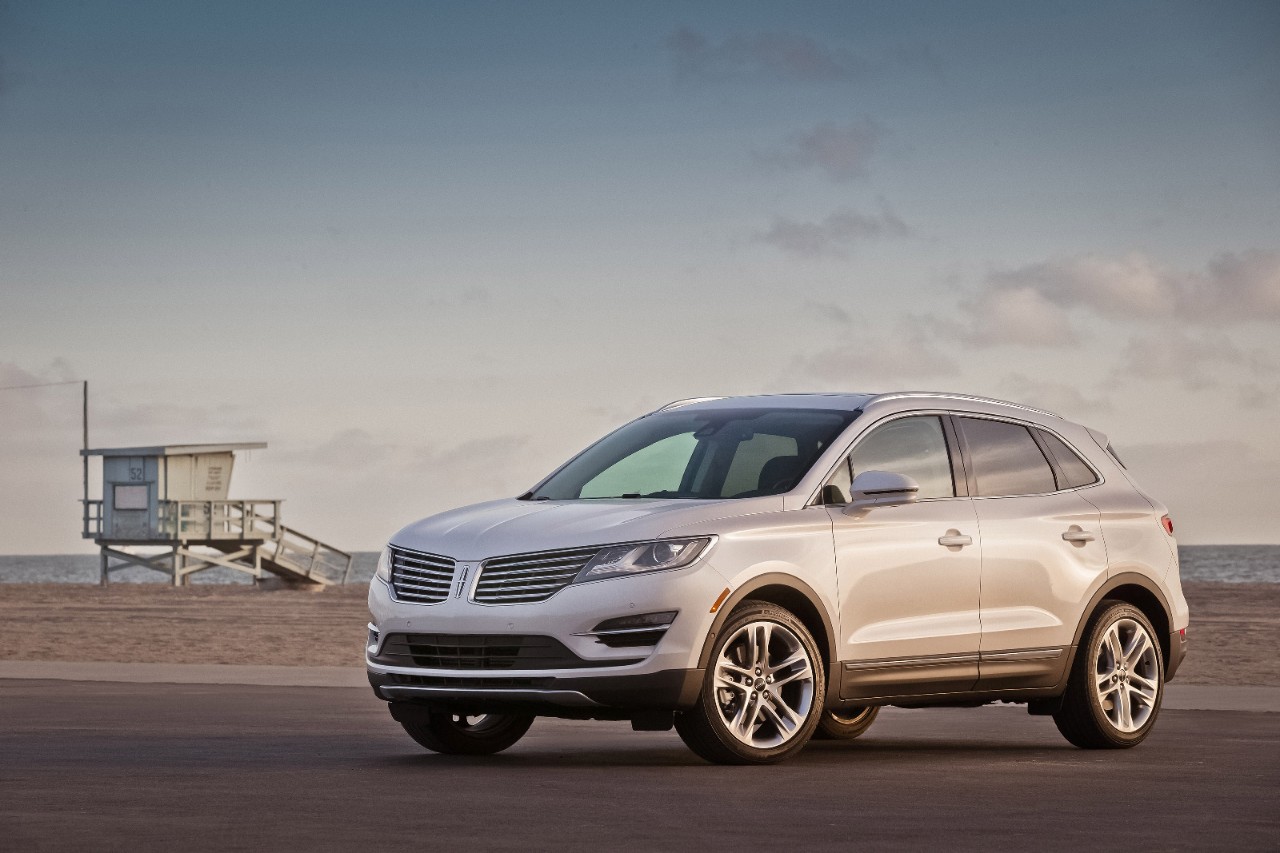
2015 Lincoln MKC SUV fits all the goodies in a compact package
by Ann M. Job, The Associated Press

Much of the technology can be quickly tailored to a driver's tastes

The MKC has an optional 2.3-litre turbo four cylinder engine which produces a V-6-like 285 horsepower and 305 foot-pounds of torque
There’s soft Scottish leather seat trim and welcoming “puddle lights” that not only courteously illuminate the ground by the front doors but project the Lincoln logo there when a driver with key fob approaches.
Even shifting the MKC is different, as Park, Reverse and other gears are activated by a vertical line of push buttons on the dashboard, rather than a gear shift lever.
Yet, the MKC, which has seating for five, has a starting retail price that’s less than that of many competitors, and less than what many people seem to expect. Specifically, starting manufacturer’s suggested retail price, including destination charge, is $33,995 for the base model with front-wheel drive. The lowest starting retail price for a 2015 MKC with all-wheel drive is $36,490.
Two key reasons for the pricing: The MKC is based on the Ford Escape SUV and built at the same Louisville, Ky., factory as the Escape
The MKC is offered only with turbocharged, four-cylinder engines.
The base 2-litre engine generates 240 horsepower and 270 foot-pounds of torque. An upgraded 2.3-litre turbo four cylinder produces a V-6-like 285 horsepower and 305 foot-pounds of torque, but this engine comes only with all-wheel drive. Starting retail price for an MKC with this engine is $41,040. Both MKC engines are mated to six-speed automatic transmissions.
And while the MKC shape resembles that of a VW Touareg SUV, the front retains Lincoln’s split-wing grille. But thankfully, it’s toned down and not gaudy as it was years ago on the Navigator.
The test MKC, which was a top-of-the-line model with all-wheel drive and the more powerful four cylinder, included a list of technology options and topped out at more than $49,000.
Tech lovers will find virtually all of today’s latest features are available for a price on the MKC, including forward collision alert, lane-keeping and voice recognition control. With active park assist, this Lincoln not only helps ease its way into parallel parking spots, its “park-out” feature helps ease the way out of tight spots, too.
Much of the technology can be quickly tailored to a driver’s tastes. For example, the lane-keeping feature can be set to just alert a driver when the vehicle begins to wander out of its lane, alert and aid the driver to get the vehicle back in the lane or just aid the driver.
Daytime running lights can be configured to more than one appearance, and a computer app will allow the driver to pre-program a time for the car to remotely start to warm the interior before the driver arrives.
The MKC tester felt stress-free, particularly when the SUV was in “comfort” mode, where suspension damping allowed for a compliant ride, even with optional 19-inch wheels.
Steering was responsive but not touchy, with good on-centre feel.
The uplevel engine provided strong power with nary a sensation of turbo lag, thanks to a three-port exhaust manifold head that separates the exhaust from certain cylinders as it heads to the twin-scroll turbocharger. This engine also is set for the Ford Mustang, but the MKC got it first. Ford Motor Co. owns both Ford and Lincoln brands.
In the test MKC that weighed nearly 4,000 pounds, power came on strongly but not wildly, and passengers who hadn’t noticed the “EcoBoost” badge on the liftgate assumed this SUV had six-cylinder power.
But fuel economy was nowhere near the federal government ratings of 18 miles per gallon in city driving and 26 mpg on the highway.
With some aggressive driving and a majority of city driving, the tester averaged just 17.8 mpg. With a 15.5-gallon gasoline tank, this translated into only a 275-mile range.
It also took some getting used to the brightly illuminated, orange letters of the “SelectShift” gear buttons. On the centre console, they’re not where a driver expects them to be. Additionally, the start push button sits at the bottom of the SelectShift buttons and is not well differentiated.